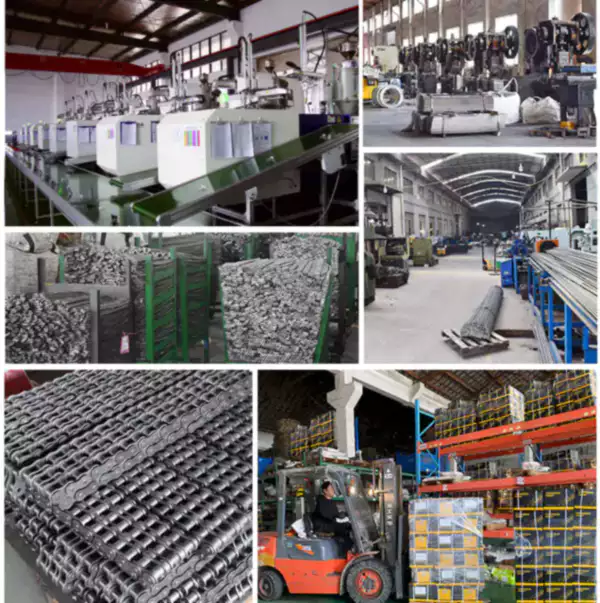Gripper chains are a vital component of many types of machinery, as they are responsible for transmitting power from the machine's motor to the rest of the system. However, they can also be dangerous if not properly handled or maintained. In this article, we will discuss the necessary safety protocols to follow when operating machinery with gripper chains.
What are gripper chains?
Gripper chains are a type of roller chain that are designed to grip the sprocket teeth by means of extended pins and side plates. They are commonly used in conveyor systems, packaging equipment, printing presses, and other machinery that requires reliable and precise power transmission. Gripper chains are available in a variety of materials and configurations, depending on the specific application.
Key safety protocols for operating machinery with gripper chains
- Wear appropriate personal protective equipment, such as safety glasses, gloves, and hard hats.
- Ensure that all guards and covers are in place before operating the machinery.
- Regularly inspect the gripper chains for signs of wear, damage, or corrosion, and replace them as necessary.
- Use proper lubrication to ensure smooth and stable chain operation.
- Do not operate the machinery if you are fatigued, under the influence of drugs or alcohol, or otherwise impaired.
- Keep the work area clean and free of debris or other obstacles.
- Never reach into a moving machine, and keep loose clothing, jewelry, and long hair away from the gripper chains.
- If the machinery is equipped with an emergency stop button, know its location and how to use it.
- Always follow the manufacturer's instructions and guidelines for safe operation.

How to purchase gripper chains
When purchasing gripper chains, there are several factors to consider. These include:
| Factor | Description |
|---|---|
| Chain Type | Choose the appropriate chain type for your application, based on factors such as load capacity, speed, and environment. |
| Chain Size | Select the correct chain size for your machinery, based on the pitch and length of the chain. |
| Material | Choose the appropriate material for your application, such as stainless steel, carbon steel, or plastic. |
| Manufacturer | Select a reputable and reliable manufacturer with a proven track record of quality and safety. |
Sprockets for gripper chains
Gripper chains and sprockets are complementary components that work together to provide reliable and efficient power transmission. Sprockets are toothed wheels that engage with the gripper chain, and are typically made of hardened steel or other durable materials. It is important to choose the right sprocket for your gripper chain, based on factors such as pitch, number of teeth, and bore size. At our company, we offer a wide range of sprockets that are specifically designed to work with our gripper chains.

Our company offers several advantages for customers looking to purchase gripper chains:
- We are a leading manufacturer of gripper chains, with many years of experience in the industry.
- We offer a wide range of gripper chains to suit any application, including custom designs.
- Our gripper chains are made from high-quality materials and are designed to withstand even the most demanding environments.
- We offer competitive pricing and fast turnaround times on all orders.
- Our customer service team is knowledgeable and responsive, and can provide expert advice and support.

Q&A
Q: How often should gripper chains be inspected?
A: Gripper chains should be inspected regularly, at least once per month or more often depending on the operating conditions. Look for signs of wear, damage, or corrosion, and replace any worn or damaged chains immediately.
Q: Can gripper chains be repaired?
A: In general, it is not recommended to repair gripper chains. If a chain is damaged or worn, it should be replaced with a new one to ensure reliable and safe operation.
Q: What is the maximum speed for gripper chains?
A: The maximum speed for gripper chains depends on several factors, including the chain size, material, and application. Consult the manufacturer's specifications and guidelines for more information.
Edited by Zqq.
